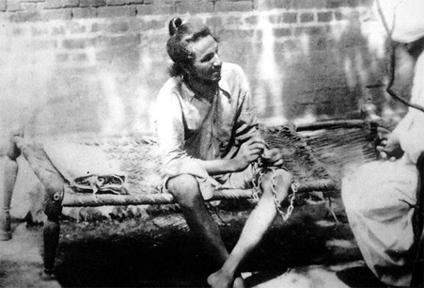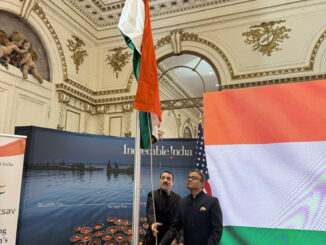
1931 Bhagat Singh Shaheed was hanged to death in the Lahore central jail along with Shivram Rajguru and Sukhdeo. Shaheed BHAGAT SINGH: was one of the leader Sikh revolutionaries of the early 20th century who earned the fame of causing explosion in the Legislative Assembly in Delhi and of committing daring acts of killing British Police Officers. He and his associates were hanged on March 23rd of 1931. Their bodies were secretly cremated on the bank of the Satluj river near Ferozpur. The associated secrecy was to avoid public outcry and any subsequent outburst of violence.
1985 Sikh Women’s Seminar was held in Toronto. The seminar’s primary objective was to bring the Sikh women together, whereby they could discuss various issues facing the community. There was a need for such a forum where Sikh women could assemble, delibrate, and contribute toward the development of programs for the Sikh youth. The following papers were presented at the seminar: A Potrait of South Asian Canadian Women; Role of Women in Sikh Society; What is Leadership; Role of Sikh Women in Canadian Society; Role of Women in Sikh Leadership; and Participation of Sikh Women in Community Life.
Shaheed Diwas
Shaheed Diwas, also known as Martyrs’ Day falls on March 23. The day honors the valor and commitment of those who sacrificed their lives for the country. On this day, freedom fighters Bhagat Singh, Shivaram Rajguru and Sukhdev Thapar were hanged to death by the British rulers. The Indian Panorama salutes the trio of India‘s freedom fighters.
23rd March will remain forever etched in our memory since, on this day in 1931, three brave leaders, Bhagat Singh, Shivaram Rajguru, and Sukhdev Thapar, were hanged by the Britishers. The day March is celebrated as Shaheed Diwas to commemorate the contributions of Bhagat Singh, Shivaram Rajguru, and Sukhdev Thapar to India’s independence.
The three brave leaders were hanged till death in Lahore for assassinating John Saunders in 1928 when they mistook him for James Scott, a British Police Superintendent. They took this step as an act of revenge against James Scott for ordering a lathi charge that caused Lala Lajpat Rai’s death. Indians will observe the 91st death anniversary of the three brave freedom fighters on 23rd March 2022.
Bhagat Singh
Born: 27th Sept. 1907, Punjab.
Hanged on 23rd March 1931.
As a freedom fighter, he was considered to be one of the most famous revolutionaries of Indian Independence movement. For this reason, he is often referred to as Martyr Bhagat Singh. At such a young age, if anyone was smiling just before being hanged to death, it was Martyr Bhagat Singh. His uncle, Sardar Ajit Singh as well as his father, were both great freedom fighters, so Bhagat Singh grew up in a patriotic atmosphere.
At an early age, Bhagat Singh started dreaming of uprooting the British Empire. Never afraid of fighting during his childhood, he thought of ‘growing guns in the fields’, so that he could fight the British. The Ghadar Movement left a deep imprint on his mind. Kartar Singh Sarabha, hanged at the age of 19, became his hero. The massacre at Jallianwala Bagh on 13th April, 1919 drove him to Amritsar, where he kissed the earth sanctified by the martyrs’ blood and brought back home a little of the soaked soil. At the age of 16, he used to wonder why so many Indians could not drive away a fistful of invaders.
In search of revolutionary groups and ideas, he met Sukhdev and Rajguru. Bhagat Singh, along with the help of Chandrashekhar Azad, formed the Hindustan Socialist Republican Army (HSRA). The aim of this Indian revolutionary movement was now defined as not only to make Bharat independent, but also to create a socialist Bharat.
A brutal attack by the police on veteran freedom fighter Lala Lajpat Rai at an anti-British procession caused his death on 17th November 1928, in Lahore. Bhagat Singh was determined to avenge Lajpat Rai’s death by shooting the British official responsible for the killing, Deputy Inspector General Scott. However he shot down Assistant Superintendent Saunders instead, mistaking him for Scott. Then he made a dramatic escape from Lahore to Calcutta and from there to Agra, where he established a bomb factory.
The British Government responded to the act by imposing severe measures like the Trades Disputes Bill. It was to protest against the passing of the Bill that he threw bombs in the Central Assembly Hall (now our Loksabha) while the Assembly was in session. The bombs did not hurt anyone, but the noise they made was loud enough to wake up an enslaved Nation from a long sleep.
After throwing the bombs, Bhagat Singh and his friend deliberately courted arrest by refusing to run away from the scene. During his trial, Bhagat Singh refused to employ any defense counsel.
Despite great popular pressure and numerous appeals by political leaders of Bharat, Bhagat Singh, Sukhdev and Rajguru were accorded the death sentence and hanged in the early hours of 23rd March 1931. Their bodies were cremated on the bank of the Sutlej in Ferozepur. Bhagat Singh was just 23 years old at that time. Old timers say that in many places, not a single hearth fire burned that day.
The last paragraph of the leaflet that he distributed (and wrote) in the Assembly Hall said: “We are sorry that we who attach such great sanctity to human life, we who dream of a very glorious future when man will be enjoying perfect peace and full liberty, have been forced to shed human blood. But sacrifice of individuals at the altar of the Revolution will bring freedom to all, rendering exploitation of man by man impossible. Inquilab Zindabad (Long live the Revolution).”
Sukhdev Thapar
Born: 15th May 1907, Punjab
He was an active member of the HSRA, being one of its senior most leaders. He is known to have started study circles at the National College (Lahore), in order to delve into Bharat’s past as well as to scrutinize the finer aspects of the world’s revolutionary literature. Along with Bhagat Singh and others he started the ‘Naujawan Bharat Sabha’ at Lahore. The main aims of this organization were to activate the youth for the freedom struggle, inculcate a rational scientific attitude, fight communalism and end the practice of untouchability.
His letter to Mahatma Gandhi written just prior to his hanging, protesting against the latter’s disapproval of revolutionary tactics, throws light on the disparities between the two major schools of thought among Indian freedom fighters at that time.
Shivram Rajguru
Born: 1908, Pune
He was born in an average middle-class Hindu Brahmin family at Khed in Pune District in 1908. He came to Varanasi at a very early age where he learnt Sanskrit and read the Hindu religious scriptures. He had a great admiration for Shivaji and his guerrilla tactics.
At Varanasi, he came in contact with revolutionaries. He joined the movement and became an active member of the Hindustan Socialist Republican Army (HSRA). Rajguru had a fearless spirit and indomitable courage. The only object of his adoration and worship was his motherland, for whose liberation, he considered no sacrifice too great. He was a close associate of Chandrashekhar Azad and Bhagat Singh and his field of activity was UP and Punjab, with Kanpur, Agra and Lahore as his headquarters.
Rajguru was a good shot and was regarded as the gunman of the party. He took part in various activities of the revolutionary movement, the most important being Saunder’s murder. Chandrashekhar Azad, Shivram Rajguru, Bhagat Singh and Jai Gopal were deputed for the job. On 17th December 1928, while Saunders came out of his office and started his motor-cycle, he was shot dead in front of the police headquarters at Lahore by Rajguru.




Be the first to comment